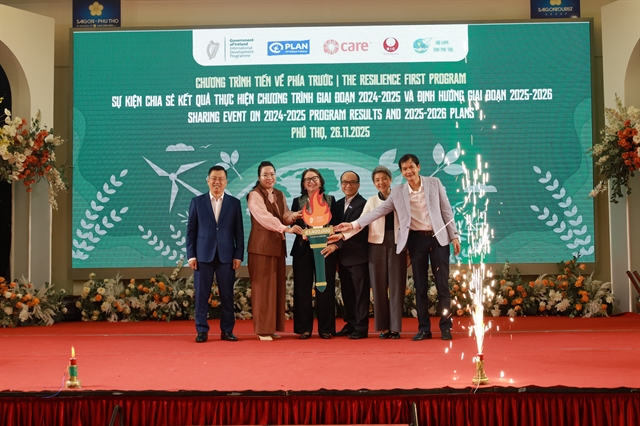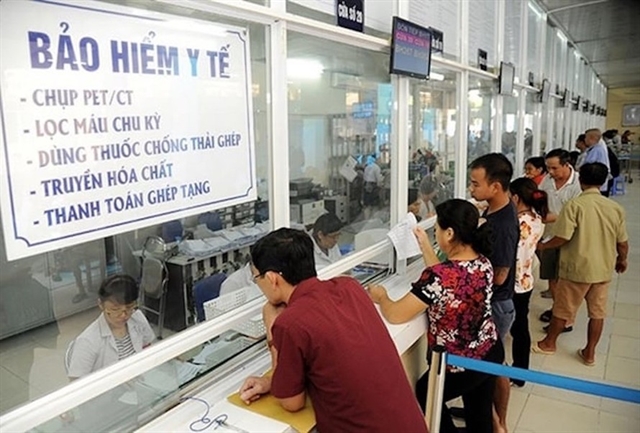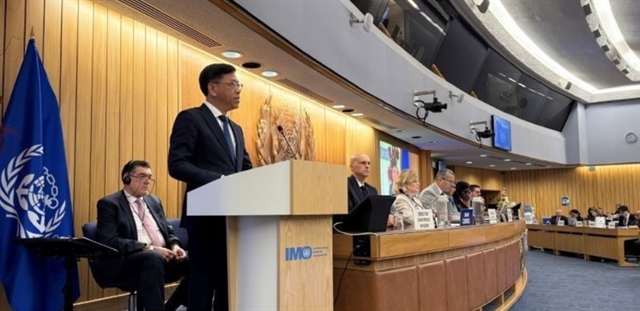 Society
Society

 |
| People register for medical examination and treatment using health insurance cards. VNA/VNS Photo |
HÀ NỘI – The policy of open access, which covers both district-level and provincial-level facilities, has contributed to reforming the financial management mechanisms in healthcare, ensuring patient rights and encouraging district-level healthcare facilities to invest in infrastructure, equipment and improved service quality.
These are undeniable benefits brought by the open-access policy.
However, nearly nine years after the policy was brought in, several issues regarding its implementation have been revealed.
The Health Insurance Law stipulates that from January 2016, open access applies to district-level facilities, and from January 2021, it applies to provincial-level inpatient treatment nationwide.
According to the Ministry of Health (MoH), the policy ensures patient rights, but it has also led to some shortcomings, especially the trend of insured patients bypassing lower-level facilities to seek treatment at higher levels, causing resource wastage and impacting the health insurance fund.
In some cases, healthcare facilities attract more patients than they can actually handle, leading to an increased number of medical examinations and treatments beyond the actual demand, affecting the efficiency of the health insurance fund.
Patients bypassing grassroots healthcare facilities for higher-level services also weakens the development of primary healthcare systems.
An assessment report by the MoH’s Health Strategy and Policy Institute showed that, although the open-access policy has made it easier for patients to access higher-level services, it also resulted in increased unnecessary hospital admissions and out-of-pocket expenses for patients.
Meanwhile, there has been no notable difference in patient satisfaction between those using open access and those receiving initial medical care at grassroot facilities.
According to a report from Việt Nam Social Security (VSS), since the implementation of district-level open access in 2016, the number of medical visits at district-level facilities increased rapidly from 56.4 million visits in 2015, accounting for 43 per cent of total medical visits, to 106.9 million visits in 2019, a 190 per cent increase compared to 2015, making up 58 per cent overall.
Conversely, visits to commune-level facilities dropped significantly from 34.2 million visits in 2015, accounting for 26 per cent of total visits, to 30.7 million visits in 2019, a 90 per cent decrease compared to 2015, and representing 17 per cent of total visits in 2019.
By 2022, this dropped further to 14.6 per cent.
VSS stated that since 2021, with the implementation of provincial-level open access, inpatient treatment at provincial facilities has increased, while admissions at central-level and district-level facilities have decreased. Simultaneously, there has been an increase in cross-provincial medical visits.
The open-access results showed that some inpatient cases treated at provincial facilities could be effectively managed at grassroots levels, such as caesarean sections, normal births, gastritis, bronchitis, or vestibular dysfunction.
The implementation of the open-access policy also affects other policies, such as strengthening grassroots healthcare, cost controls and reforming payment methods.
Resource wastage
Addressing this issue, at a recent discussion on the draft amendment to the Health Insurance Law at the National Assembly’s meeting, deputy Trần Khánh Thu of Thái Bình Province remarked that this mechanism may facilitate better access to services for insured patients, but could also lead to missed opportunities for early disease detection.
This reduces treatment opportunities for patients as they bypass primary healthcare services in favour of higher-level facilities.
Prolonged reliance on this approach may weaken grassroots healthcare systems, even risking collapse, threatening the achievement of Resolution No. 20/NQ-TW's goals to enhance public health protection, care and promotion in the new era, as well as Directive No. 25-CT/TW's objectives to strengthen grassroots healthcare.
This risks wasting the resources and efforts invested in grassroots healthcare over the years.
Grassroots healthcare is the foundation of Việt Nam’s health system.
Primary healthcare is the first point of contact for disease prevention, health issues and treatment and needs strengthening and consolidating to ensure an effective referral system across different levels of care.
Deputy Thu pointed out that patients' frustration with the referral process stems from the challenges faced in obtaining transfer documents, particularly for patients with chronic or severe illnesses.
Additionally, the limited availability of medication at grassroots facilities compared to that at higher-level facilities has led patients to bypass primary care.
The referral process is essential and necessary for managing public healthcare. Transfer documents provide administrative details, patient conditions and treatment histories, enabling receiving facilities to prepare for timely care and treatment.
Meanwhile, lawmaker Nguyễn Hoàng Bảo Trân from Bình Dương Province also agreed that the open-access policy has created issues related to bypassing and overcrowding at higher-level facilities, diminishing the use of primary healthcare services.
The current Health Insurance Law only covers open access for hospitals and commune-level facilities, but does not include district-level healthcare models such as medical centres, general clinics, military-civilian clinics, or health units of organisations.
Meanwhile, the 2023 Medical Examination and Treatment Law classifies healthcare into three levels: primary care, basic care, and specialised care, replacing the previous system based on hospital rankings.
Therefore, adjustments to the Health Insurance Law are needed to synchronise referral and open-access policies, ensuring effective health insurance management and payment mechanisms.
Additionally, strengthening the role of grassroots healthcare in primary care and insurance treatment is crucial. VNS




